Why Understanding Safes and Vaults Matters for Your Security
Safes and vaults are security solutions designed to protect your valuables, but they serve different purposes:
- Safes are smaller, portable security containers for homes and small businesses.
- Vaults are larger, permanent, room-sized structures with maximum security features.
- Key differences: Vaults offer superior protection and space, while safes provide affordability and portability.
The global safes and vaults market is projected to reach $15.8 billion by 2030, reflecting increasing demand for secure storage. Whether you’re a homeowner in Chicago protecting heirlooms or a Melrose Park business safeguarding assets, choosing the right option depends on your needs, space, and budget.
I’m Mina Georgalas, owner and president of Bernard Movers. With nearly 30 years in the moving industry, I’ve helped countless Illinois families and businesses relocate safes and vaults of all sizes. Understanding these differences is crucial, especially when planning a move that involves such heavy, valuable items.

Understanding Your Security Needs: A Guide to Safes and Vaults
When protecting what matters most, understanding your options is the first step. Whether you’re safeguarding heirlooms in your Chicago home or protecting business assets in Melrose Park, there’s a wide spectrum of safes and vaults designed for different needs and budgets.
Types and Purposes: What Are You Protecting?
The right security solution depends on what you’re trying to protect and from what threats. Different safes and vaults are engineered for specific purposes.
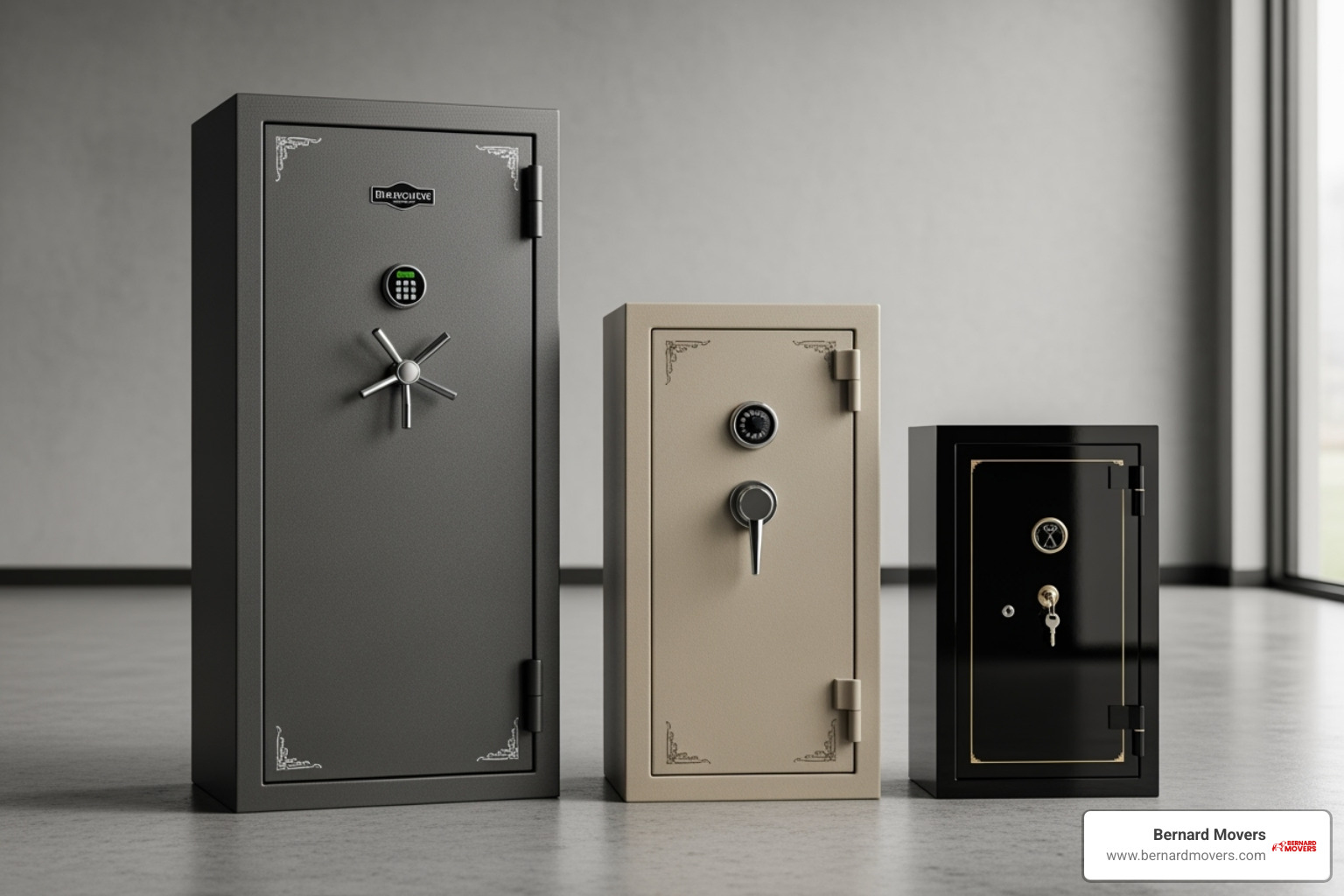
- Burglary-Resistant Safes: Built with solid steel plates or composite materials, they feature reinforced locks and complex boltwork to repel physical attacks. They are ideal for storing cash, precious metals, and jewelry.
- Fire-Resistant Safes: Use specialized insulation that releases moisture when heated, keeping the internal temperature below a certain threshold (e.g., 350°F for paper). It’s crucial to match the safe’s rating to what you’re storing, as digital media requires stricter temperature and humidity control.
- Gun Safes: A key part of responsible firearm ownership in Illinois, these safes prevent unauthorized access and theft. They range from small handgun safes to large long-gun safes, and many offer fire protection as a secondary benefit.
- Data Safes (Media Safes): Standard fire safes won’t protect electronic media. Data safes are engineered to keep the interior below 125°F and 80% humidity, protecting hard drives, USB sticks, and backup tapes from heat, moisture, and magnetic fields.
- Residential & Commercial Safes: Residential options often prioritize discretion, like wall safes hidden behind pictures or floor safes. Commercial safes are built for higher traffic and security, including depository safes for cash drops and high-security safes for jewelers.
- Vaults: The ultimate security solution for extensive collections or institutional needs. These room-sized enclosures, either traditional concrete or modern modular designs, offer unparalleled protection.
Key Features to Consider When Choosing Your Safe or Vault
Once you know what you’re protecting, consider the features that provide security and functionality.
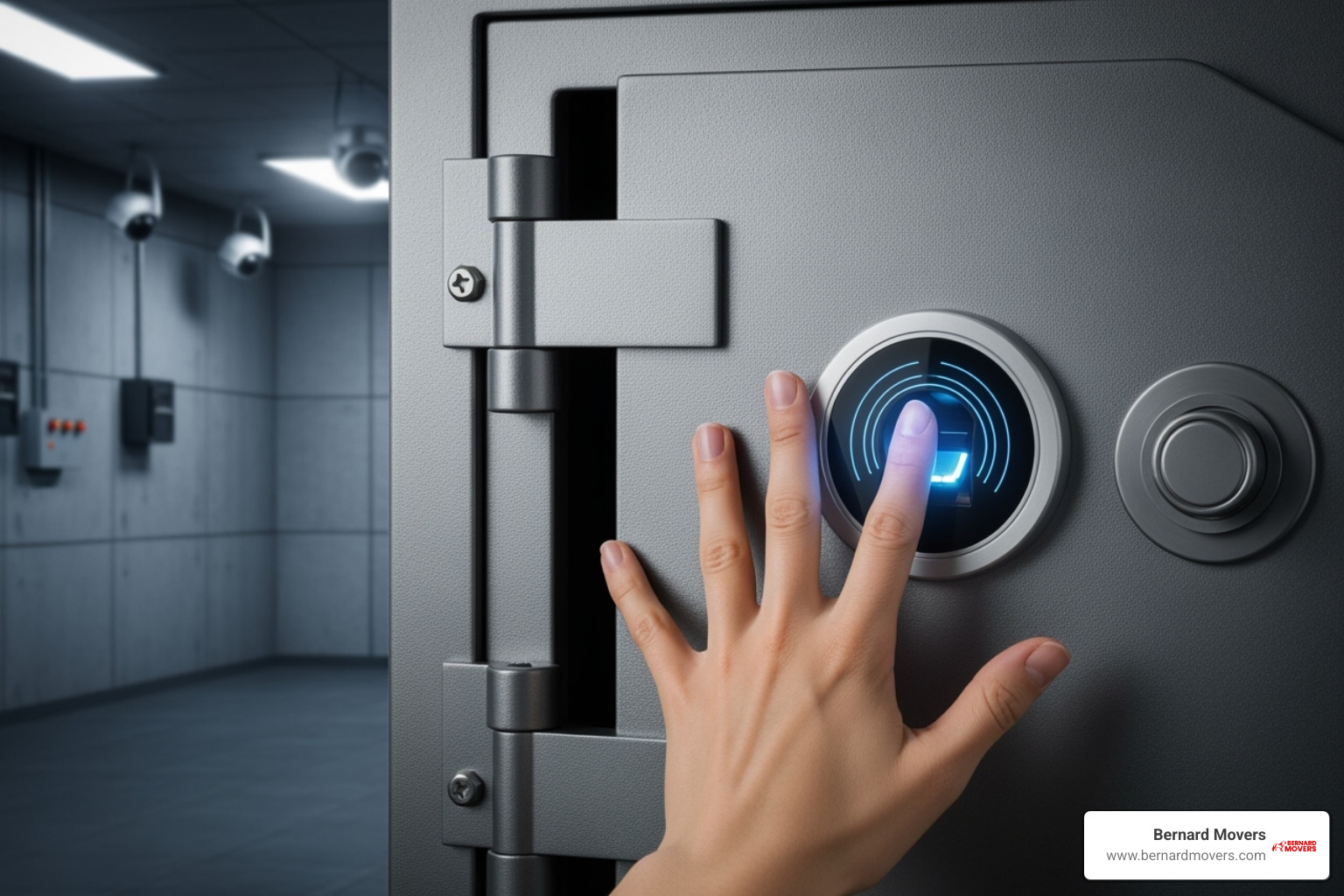
- Locking Mechanisms: Your choice impacts speed and reliability. A mechanical combination dial is ultra-reliable but slow. Digital keypads offer quick access but need batteries. Biometric (fingerprint) scanners are the fastest but can be finicky. High-security applications often use dual-lock systems.
- Fire & Burglary Ratings: Look for independent certification from Underwriters Laboratories (UL).
- Burglary Ratings indicate resistance to tool attacks. An RSC rating is good for residential use, while TL-15 and TL-30 ratings signify the safe can withstand 15 or 30 minutes of sustained attack with sophisticated tools.
- Fire Ratings specify how long the interior stays below a certain temperature. A Class 350 1-Hour rating protects paper for an hour. For digital media, you need a stricter Class 125 rating.
- Construction: Quality is key. Look for a thick, solid steel door and body, not thin metal. The boltwork—the steel pins locking the door—should be thick and cover multiple sides. A critical hidden feature is a relocker, a secondary device that deadlocks the safe if the main lock is attacked.
- Size and Weight: Always buy bigger than you think you need; your collection of valuables will grow. A heavier safe is also a deterrent, as it’s much harder for a thief to simply carry it away, especially when properly anchored.
- Smart Features: Modern safes can integrate with your home, offering features like interior LED lighting, built-in dehumidifiers, and smartphone alerts for tampering or incorrect code entries.
Home Safes: A Chicago Perspective
For many Chicago homeowners, a home safe is preferable to a safe deposit box.
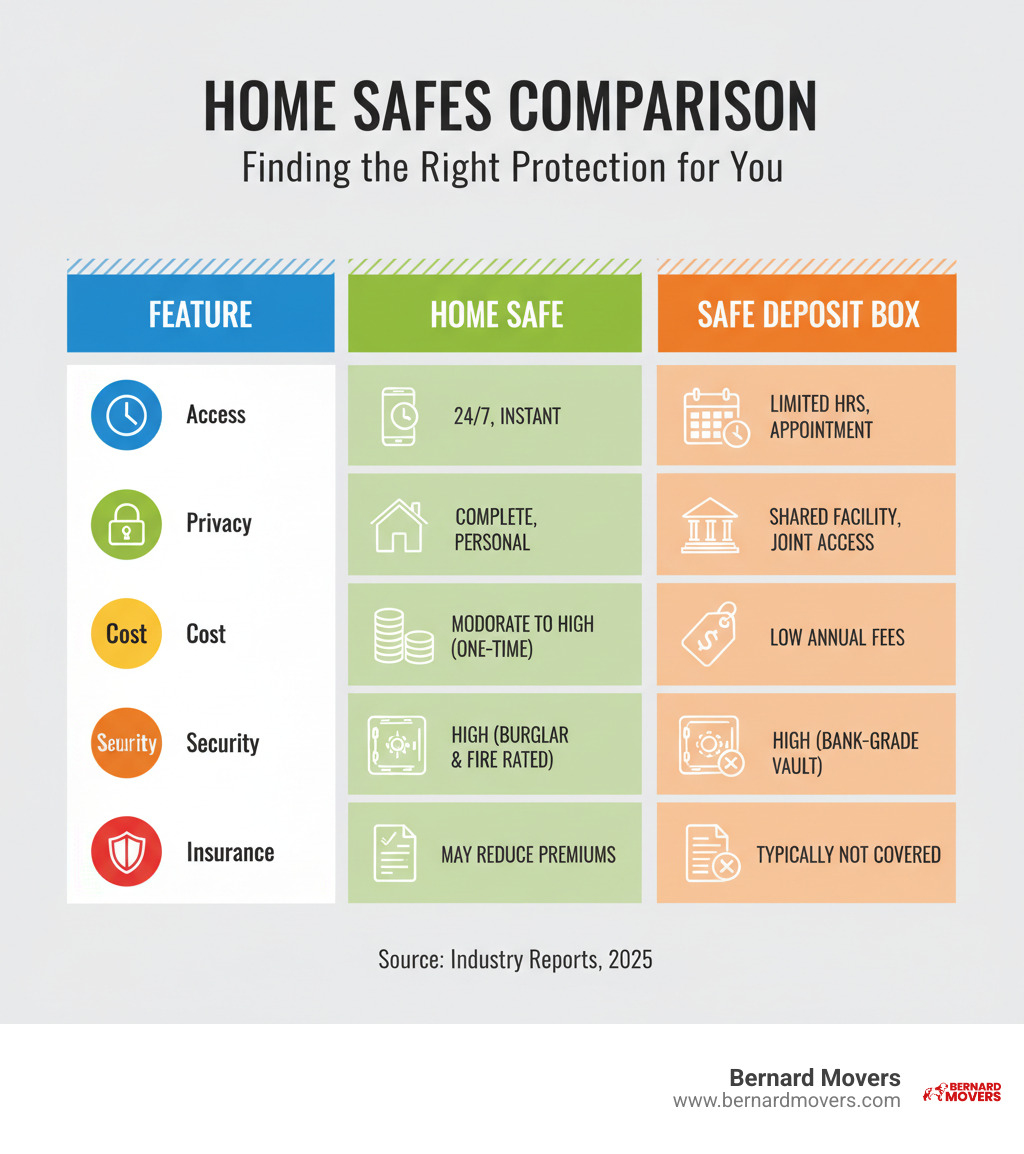
- Access and Privacy: A home safe offers 24/7 access and complete confidentiality, unlike a bank which has limited hours.
- Customization: You can select the perfect size and features for your needs, rather than being limited by a bank’s options.
- Cost: It’s a one-time purchase, and owning a UL-rated safe may lower your homeowner’s insurance premiums. The contents of a safe deposit box are not FDIC insured, requiring a separate policy.
Safe deposit boxes offer high security but limited access and no inherent insurance on contents. Many Illinois residents use both, keeping frequently needed items and firearms at home and storing seldom-accessed assets in an off-site vault.
Installation and Maintenance for Safes and Vaults
Proper installation and maintenance are crucial for your safe’s effectiveness.
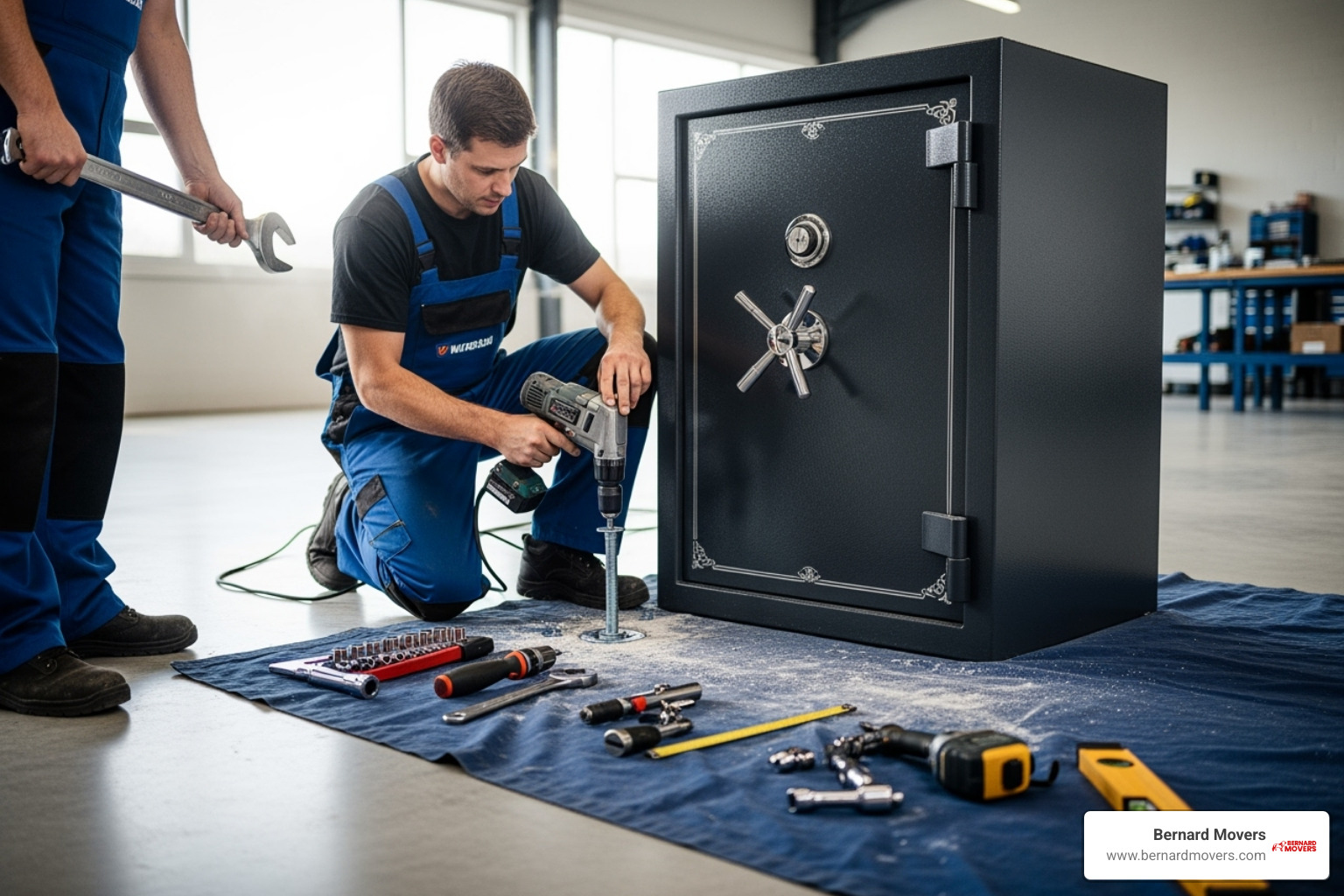
- Strategic Location: Choose a discreet, structurally sound location. Avoid obvious spots and consider environmental factors like dampness in basements.
- Professional Installation & Anchoring: Safes are incredibly heavy. Professional installation prevents injury and property damage. Bolting Down Your Safe for an Added Layer of Protection is essential to prevent thieves from carrying it away.
- Regular Maintenance: Change batteries in digital locks, operate combination dials periodically, and check door seals. Use a dehumidifier inside fireproof safes to prevent moisture damage.
When it’s time to move, relocating a safe requires the same professional expertise. Our Moving Tips offer general advice, but for heavy items like safes, professional help is indispensable.
Advanced Solutions: Modular Vaults and Secure Storage
For extensive collections or commercial needs, advanced solutions offer greater flexibility.
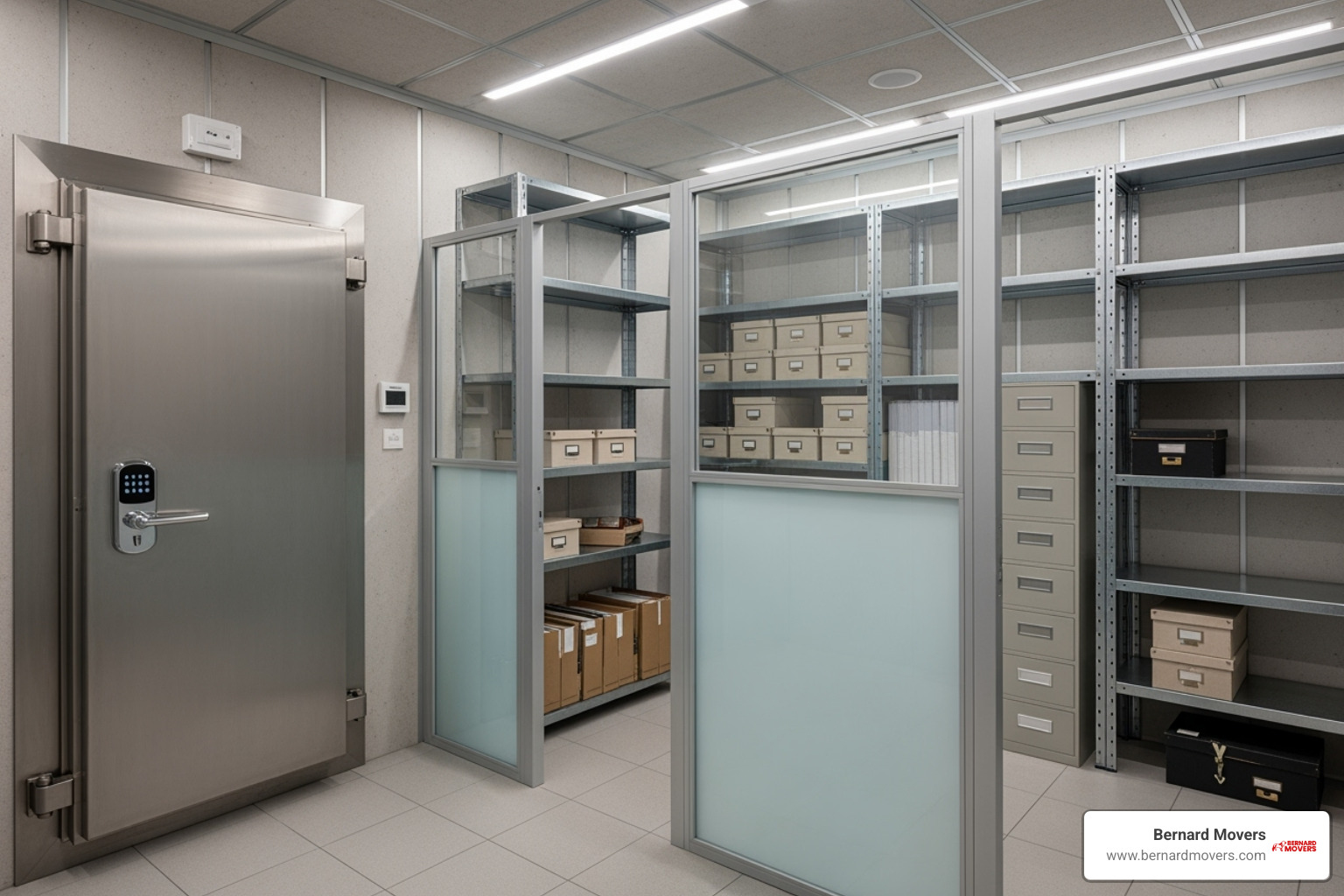
Modular vaults use prefabricated, high-security panels to turn any room into a scalable, custom vault. They offer the protection of a traditional bank vault but can be expanded, reconfigured, or even relocated. This makes them ideal for Chicago homeowners and businesses with growing needs.
During a move or renovation, temporary and long-term storage provide a secure bridge. At Bernard Movers, our Packing, Loading, and Storage solutions offer climate-controlled, secure warehouse storage. This is perfect if your new home in Melrose Park isn’t ready or you need to store assets securely during a transition.
The Practicalities: Costs, Laws, and Professional Moving
Owning and moving safes and vaults involves practical considerations. Costs vary widely, so always budget for professional installation and anchoring, which are crucial for security.
In Illinois, firearm owners must follow gun safe regulations for safe storage, making a quality gun safe a legal and safety necessity.
The most overlooked aspect is moving. The sheer weight of safes makes DIY moves dangerous and likely to cause property damage. This is where professional safe movers are essential.
Benefits of Professional Safe Moving:
- Safety: Our experienced crews at Bernard Movers use specialized equipment to prevent injury and property damage.
- Efficiency: We relocate your safe quickly, minimizing disruption during your move in Chicago or across Illinois.
- Peace of Mind: Knowing your valuable safe and its contents are handled by experts provides invaluable peace of mind.
Items like precious metals, important documents, and heirlooms deserve the protection of a high-security safe. Investing in professional moving services protects that investment.
Conclusion: Securing Your Valuables for the Long Haul
Choosing the right safe or vault is a critical step in protecting what matters most. Whether you need a fire-resistant safe for your Chicago apartment or a modular vault for your business, the key is to match the solution to your specific needs.
But your security strategy doesn’t end with the purchase. What happens when you need to move your safe? A 500-pound safe isn’t a DIY project. Attempting to move it yourself risks serious injury, damage to your home, and compromising the safe itself.
At Bernard Movers, we’ve specialized in moving heavy, valuable items like safes and vaults for nearly 30 years. Our teams in Chicago, Melrose Park, and across Illinois have the right equipment and expertise to handle these challenges safely and efficiently. We protect your property, ensure your safe is transported securely, and can coordinate its proper reinstallation.
You invested in a safe to protect your valuables. Let us protect your investment during your move. Learn more about our Specialty Moving Services and ensure your security remains intact, no matter where you’re headed.